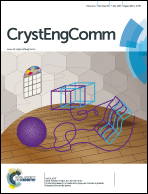Tunable growth of PbS quantum dot–ZnO heterostructure and mechanism analysis†
Abstract
The potential applications of quantum dots on wide band gap semiconductor structures in flexible and large-scale optoelectronics demand fundamental analysis of their tunable growth. Herein, PbS quantum dots (<5 nm) on a ZnO heterostructure are formed by a successive ionic layer adsorption and reaction method. Well distributed PbS quantum dots on ZnO are achieved just by changing the solvent of Pb(NO3)2 and analyzed from the view of solvent-related interaction and adhesion between a hydrophobic substrate and self-assembled layers. This solvent-related distribution of PbS quantum dots on ZnO is confirmed by scanning electron microscopy and transmission electron microscopy, which shows that a fine distribution of PbS quantum dots on ZnO is feasible by using more ethanol in the solvent of Pb(NO3)2. With the aim towards tunable growth of a PbS on ZnO heterostructure, the effects of concentration and dipping times on the size and structure of PbS quantum dots are also explored, which demonstrates that the size of quantum dots is mainly controlled in the thermodynamic domain. Meanwhile, the stoichiometric ratio of Pb and S can also be tuned by changing the dipping times. Most significantly, their optical and electrical properties also show an obvious solvent-related characteristic, which provides another key factor for the potential fabrication and application of quantum dot based devices.


 Please wait while we load your content...
Please wait while we load your content...